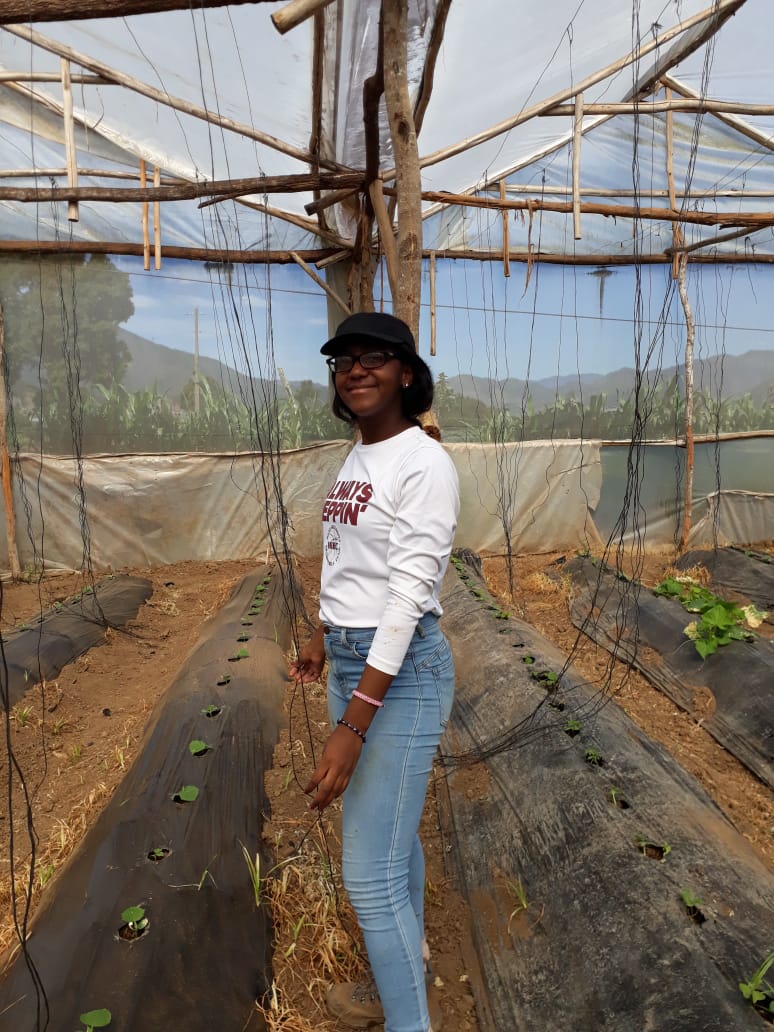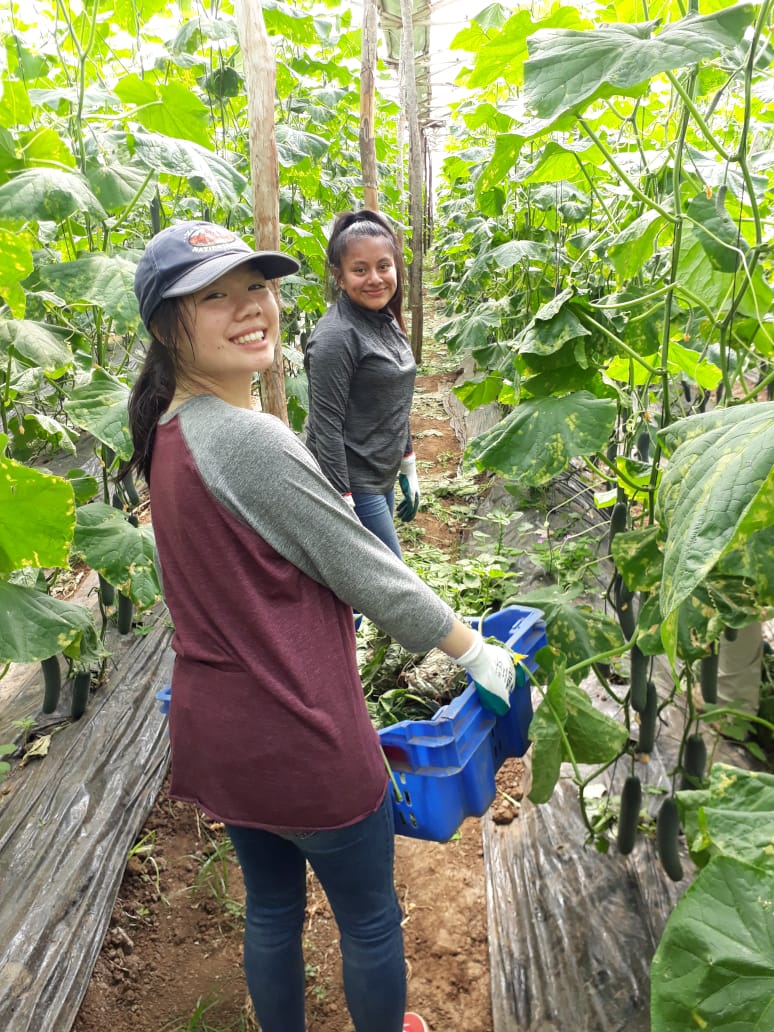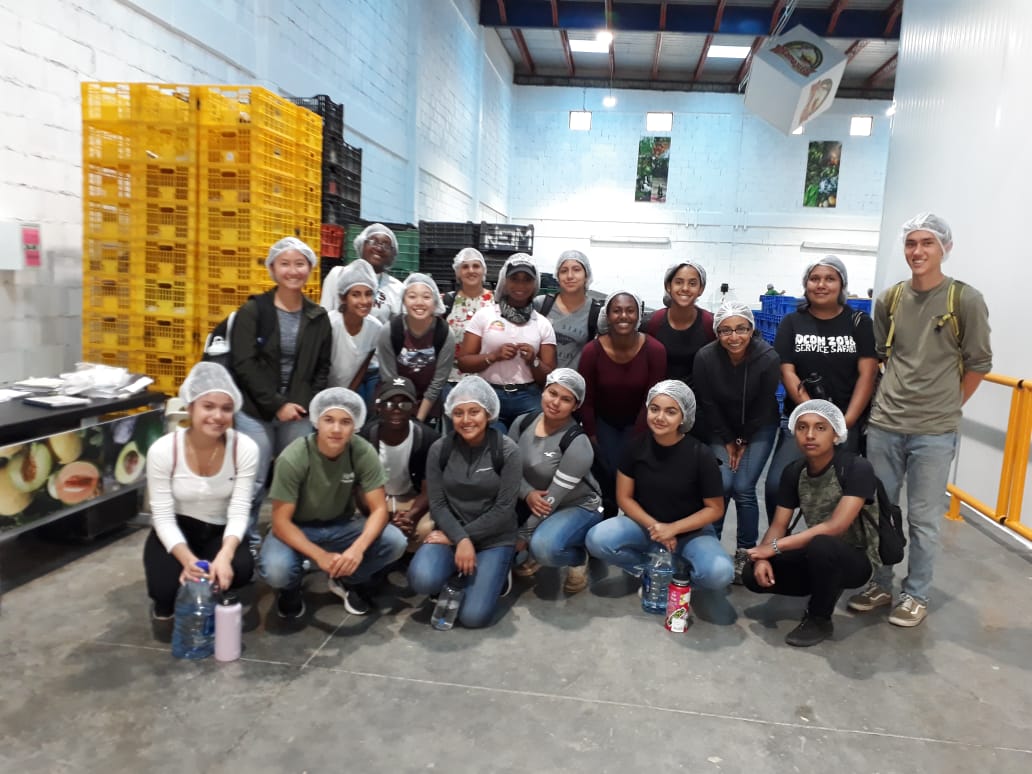Hola Familias,
Today we had a long day experiencing what it’s like to work in a cucumber greenhouse and cucumber processing plant. In the morning we met with Alberto Quezada who owns a handful of greenhouses and he introduced us to some of his workers and explained the types of jobs they do. For our part, we helped the workers clear out the cucumber leaves and stems from cucumber plants that had been previously processed. The work was hard and tiring with our backs bent over the entire time. And yet, this was only a little bit of what the workers here do on a daily basis. We were surprised that the majority of the workers are Haitian and that the few Dominican workers there are stay separate due to differences in culture. It’s sad, but that’s how they run things. Much like Mexican farm workers in the United States, the Haitian workers do the most hard-working labor farm jobs in the Dominican Republic and they get paid less than the Dominican workers who typically handle higher level jobs at the farm. The average Haitian worker at the farm makes about $7 a day.
After working for a few hours in the greenhouse, we traveled to a processing factory and got to see the process that cucumbers go through from the moment they arrive in a farm truck to the final product of cucumber boxes ready to be shipped to the United States and elsewhere. When cucumbers arrive from farms, they come in crates that are heavy but can be carried by one or two men. The crates get weighed all at once on a large scale and then moved to an area where women remove the stems and flowers and then drop the cucumbers into a cold water bath of chlorine and water. The cucumbers float downstream to a conveyor belt where they are pushed onto the conveyor belt by a male worker using what looks like a canoe paddle. Women aren’t allowed to do this job and likewise, men are not allowed to clip the ends of the cucumbers and toss them into the cold water bath. After the cucumbers get paddled onto the conveyor belt, they go through a series of brush rollers and clean water sprayers to rinse off the chlorine and any other farm debris. It looks a lot like a miniature car wash for cucumbers. After the cucumbers are washed, they are sorted by women who decide which cucumbers are good enough to be sold in stores and what category they can be sold as (fancy to generic). if anything is wrong with a cucumber, it goes into a large waste bin. If it isn’t perfectly green, round, small its considered no good. There is about 60% waste.
in the evening, the community of Rio Grande came to the hotel to listen to our presentation of the project, which is making a basketball court with some side projects included. The presentation was basically showing the community our proposal and how we would want to do things and set them up. We didn’t realized that our project is already over budget because we included two side projects, the community told us that they have another organization that can contribute donations to the project. The last group was to teach the kids how important it is to have a clean community by playing some interacting games.
One thing that stood up to us was the amount of cucumbers that were rejected. These cucumbers look perfectly fine to us but but to the workers, any slightly deformed cucumber is rejected. Another thing that stood out was Alberto’s friendliness. He welcomed us as his family but we were surprised to see and hear that Haitians and Dominicans work different hours and are treated differently. Now when I buy produce back home i’m going to look at it differently.




Shout outs for our parents: (more tomorrow)
“Hola mami, hola a todos! Los extraito mucho, todo esta muy bien aqui, los quiero.” – Keiry
“Hi mom, hi dad! Hope everything is alright. Dad, I hope you have a fun trip at Jays’s wedding. Tell him I say hi!” – Vivian
“Hi mom and dad! I’m doing fine here and having a lot of fun here. Have fun in Alaska!” – Rhea
“Hey mom. I’m doing good!” – Ray
“Hey mom – I miss you!” – Stephanie

Hola hija cómo estás espero sigas disfrutando de esos lugares y de su gente saludos a todos te kiero mucho mija te manda saludos tu papá y tus hermanos poche y Sarah y tu sobrino jonah besos tú mami ke te kiere mucho Mary Guzman 😘
Hola Keiry we miss you!! The house is not the same without you!!! We need noise Jaja!!